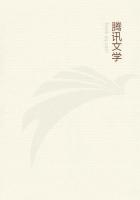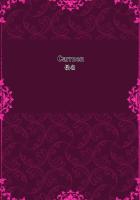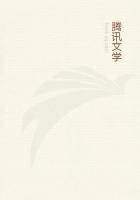In connection with this statement, it is interesting to refer to the experiments of Helmholtz on the rapidity of transmission of the nervous actions. The rate is given differently in Valentin's report of these experiments and in that found in the "Scientific Annual" for 1858. One hundred and eighty to three hundred feet per second is the rate of movement assigned for sensation, but all such results must be very vaguely approximative. Boxers, fencers, players at the Italian game of morn, "prestidigitators," and all who depend for their success on rapidity of motion, know what differences there are in the personal equation of movement.
Reflex action, the mechanical sympathy, if I may so call it, of distant parts; Instinct, which is crystallized intelligence,--an absolute law with its invariable planes and angles introduced into the sphere of consciousness, as raphides are inclosed in the living cells of plants; Intellect,--the operation of the thinking principle through material organs, with an appreciable waste of tissue in every act of thought, so that our clergymen's blood has more phosphates to get rid of on Monday than on any other day of the week; Will,-- theoretically the absolute determining power, practically limited in different degrees by the varying organization of races and individuals, annulled or perverted by different ill-understood organic changes; on all these subjects our knowledge is in its infancy, and from the study of some of them the interdict of the Vatican is hardly yet removed.
I must allude to one or two points in the histology and physiology of the organs of sense. The anterior continuation of the retina beyond the ora serrata has been a subject of much discussion. If H. Muller and Kolliker can be relied upon, this question is settled by recognizing that a layer of cells, continued from the retina, passes over the surface of the zonula Zinnii, but that no proper nervous element is so prolonged forward.
I observe that Kolliker calls the true nervous elements of the retina "the layer of gray cerebral substance." In fact, the ganglionic corpuscles of each eye may be considered as constituting a little brain, connected with the masses behind by the commissure, commonly called the optic nerve. We are prepared, therefore, to find these two little brains in the most intimate relations with each other, as we find the cerebral hemispheres. We know that they are directly connected by fibres that arch round through the chiasma.
I mention these anatomical facts to introduce a physiological observation of my own, first announced in one of the lectures before the Medical Class, subsequently communicated to the American Academy of Arts and Sciences, and printed in its "Transactions" for February 14, 1860. I refer to the apparent transfer of impressions from one retina to the other, to which I have given the name reflex vision.
The idea was suggested to me in consequence of certain effects noticed in employing the stereoscope. Professor William B. Rodgers has since called the attention of the American Scientific Association to some facts bearing on the subject, and to a very curious experiment of Leonardo da Vinci's, which enables the observer to look through the palm of his hand (or seem to), as if it had a hole bored through it. As he and others hesitated to accept my explanation, I was not sorry to find recently the following words in the "Observations on Man" of that acute observer and thinker, David Hartley. "An impression made on the right eye alone by a single object may propagate itself into the left, and there raise up an image almost equal in vividness to itself; and consequently when we see with one eye only, we may, however, have pictures in both eyes."
Hartley, in 1784, had anticipated many of the doctrines which have since been systematized into the theory of reflex actions, and with which I have attempted to associate this act of reflex vision. My sixth experiment, however, in the communication referred to, appears to me to be a crucial one, proving the correctness of my explanation, and I am not aware that it has been before instituted.
Another point of great interest connected with the physiology of vision, and involved for a long time in great obscurity, is that of the adjustment of the eye to different distances. Dr. Clay Wallace of New York, who published a very ingenious little book on the eye about twenty years ago, with vignettes reminding one of Bewick, was among the first, if not the first, to describe the ciliary muscle, to which the power of adjustment is generally ascribed. It is ascertained, by exact experiment with the phacueidoscope, that accommodation depends on change of form of the crystalline lens.
Where the crystalline is wanting, as Mr. Ware long ago taught, no power of accommodation remains. The ciliary muscle is generally thought to effect the change of form of the crystalline. The power of accommodation is lost after the application of atropine, in consequence, as is supposed, of the paralysis of this muscle. This, I believe, is the nearest approach to a demonstration we have on this point.
I have only time briefly to refer to Professor Draper's most ingenious theory as to the photographic nature of vision, for an account of which I must refer to his original and interesting Treatise on Physiology.
It were to be wished that the elaborate and very interesting researches of the Marquis Corti, which have revealed such singular complexity of structure in the cochlea of the ear, had done more to clear up its doubtful physiology; but I am afraid we have nothing but hypotheses for the special part it plays in the act of hearing, and that we must say the same respecting the office of the semicircular canals.















